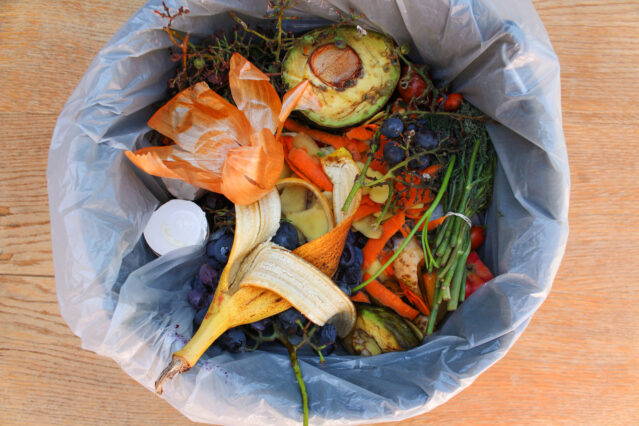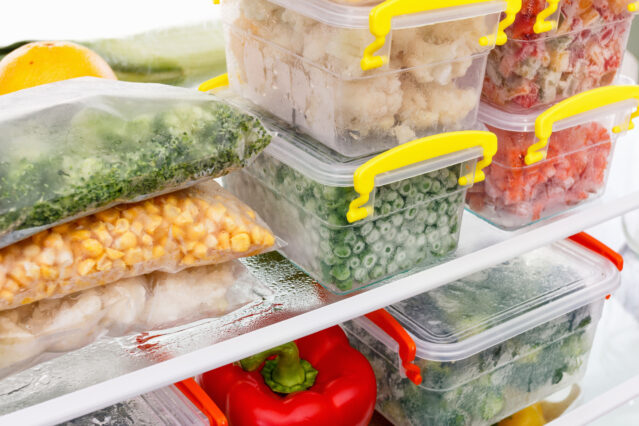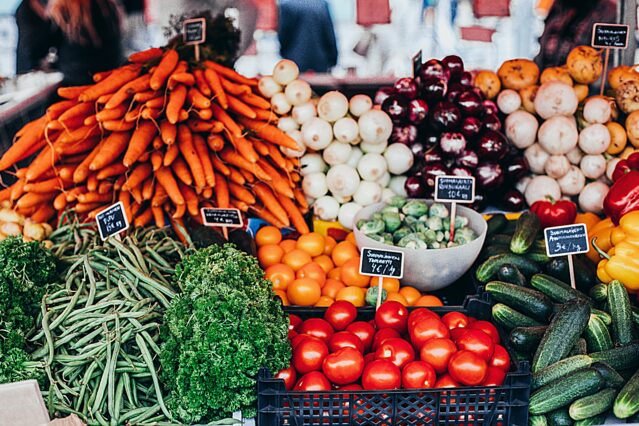---------------------------------------

Experts estimate that people around the world waste 1.3 billion tons of food each year.1 The costs to individuals, families, and the environment are astronomical. You can make a difference by making a personal commitment to minimizing food waste.
At Mark’s Daily Apple, we’re joining Primal Kitchen in an effort to #MaketheMost of mealtime this National Food Waste Day. Scroll down to find tips and techniques for being more sustainable and reducing your environmental footprint by reducing food waste, optimizing your grocery budget, and contributing less to the landfill.
For more information, head to PrimalKitchen.com and sign up to receive an exclusive e-book to fight food waste with tasty recipes, packaging hacks, and more tips!
Store and Preserve Food Properly So It Doesn’t Go to Waste

Food spoiling before you get a chance to eat it is a huge contributor to food waste. In additional to shopping smart (more on that below), you can nip this problem in the bud by storing food properly after you bring it home from the store.
For those times when you buy a little too much or you’re lucky enough to have a bountiful garden harvest, learn how to preserve that food and enjoy it for months to come.
Avoid spoilage:
- Vegetable Victory: How to Best Preserve Produce
- When Do Foods Really Go Bad?
Freeze:
- How to Freeze Produce
- Fresh Versus Frozen Food: Which Is More Nutritious?
Dehydrate:
- Dehydrating Food at Home: How to Get Started
- Easy Camping Meals You Can Prepare at Home
- How to Make Your Own Jerky
- How to Make Turkey Jerky (That’s Super Easy and Tastes Like Thanksgiving)
Pickle and ferment:
- Sauerkraut Benefits (with an Easy Homemade Sauerkraut Recipe)
- Pickled Vegetables, Two Ways: Home Fermented and Quick Pickles
What to Do with Food Scraps: Trash to Treasure
Those food scraps aren’t trash! There’s still a lot you can do with them.
Turn them into compost: How to Start Composting
Make bone broth:
- Chicken Bone Broth Four Ways
- Beef Bone Broth Variations
- Instant Pot Chicken Bone Broth Recipe (with Stovetop Option)
Get creative: The Many Uses of Junk Food
Eat Nose to Tail

We know, those bits and bobbles can be a little off-putting at first, but organ meats are some of the most nutritious foods on the planet! Eating the skin and gristly bits nets you a bunch of collagen to balance out the methionine in muscle meat. The bones of small, oily fish contain calcium and other minerals. And best of all, almost nothing goes to waste.
This is huge at a time when we’re fighting against a tide of anti-meat sentiment and claims that meat eating is bad for the environment. The best thing we meat consumers can do is advocate for and practice responsible omnivory or carnivory.
Get started with nose-to-tail eating:
- Guide to Organ Meats
- Why We Should All Be Eating Organ Meats
- How to Eat More Organ Meat
- Organ Meat Recipes
- 6 Sneaky Ways to Work Offal Into Your Diet
Learn more about responsible farming and animal raising:
- The Case For Better Meat
- How to Eat Meat and Still Reduce Your Environmental Impact
- Primal Kitchen Podcast: Farming’s Future with Force of Nature Founders Robby & Taylor
- Primal Kitchen Podcast: Pasturebird Founder Paul Greive Talks the Future of Farming & Regenerative Practices
Seasonal Eating and Locavorism

One way to reduce your carbon footprint is to buy locally grown food when you can instead of food shipping across the country or around the world.
Shopping at farmer’s markets not only supports local farmers and ranchers, but you also cut down on food packaging. Prioritizing locally grown produce also means you’ll naturally eat the foods that are in season in your region.
More information on seasonal eating:
- Seasonal Eating: Getting the Most Out of Winter Vegetables
- Seasonal Eating: 9 Tasty Springtime Recipes
- The Question of Seasonality in Human Health and Nutrition
- The Question of Seasonality in Fructose Availability
- Seasonality, Climate, and Diet
Shop Smart and Meal Plan
Planning a few days’ or a week’s worth of food can save money and cut down on food waste. A little leg work up front ensures you’re only buying what you need.
Here are some ideas to get you started:
- 90-Minute Low-Carb, Keto Meal Prep
- 10 Freezer-Friendly Meals
- Lazy Keto Meal Plan
- 15-Minute Meal Prep: Keto Ground Beef Recipes
- 7 Days, 7 Salads Challenge
More grocery shopping tips:
- Navigating the Grocery Store on a Budget
- How to Clean Out Your Kitchen and Go Primal
Reduce, Reuse, Recycle
Don’t just toss those empty mayo jars. Upcycle them!
- How to Create a Mason Jar Salad out of a Mayo Jar
- Recycled DIY Greenhouse Garden & Mayo Planters
- Primal Kitchen Mayo Jar Upcycle: Holiday Terrarium (video)
Take advantage of your local recycling program. Look on all food packages for what can be recycled or composted.
Small Steps Add Up to More Sustainability
Learn how to reduce food waste, cut down on your carbon footprint, and put less in the landfill. Small steps really do add up, especially when we all do our part.
Check out this post for lots of easy-to-implement ideas: Sustainable, Eco-friendly Kitchen Updates
Reducing food waste is something you can do at home that really does make a difference. Talk to your friends and family, and start implementing some of these practices. What do YOU do to reduce food waste?
The post Easy Ways to Reduce Food Waste and Pitch in for the Planet appeared first on Mark's Daily Apple.
-----------------------------------------
By: Editorial Team
Title: Easy Ways to Reduce Food Waste and Pitch in for the Planet
Sourced From: www.marksdailyapple.com/reduce-food-waste/
Published Date: Thu, 28 Apr 2022 14:00:00 +0000
Read More
Did you miss our previous article...
https://prohealthsciences.com/general-health-and-wellness/the-new-science-of-forgetting
 General Health and WellnessFitness and ExerciseSupplements and VitaminsPandemic NewsVideosPrivacy PolicyTerms And Conditions
General Health and WellnessFitness and ExerciseSupplements and VitaminsPandemic NewsVideosPrivacy PolicyTerms And Conditions
